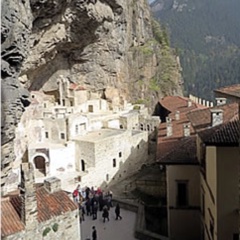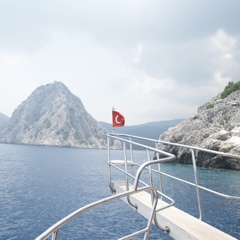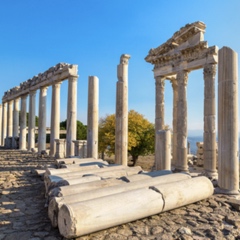All of Turkey's toll highways and bridges have been converted to the High-Speed Toll System (Hızlı Geçiş Sistemi, "Fast Transit System," or HGS) to increase the speed of traffic flow. This means that you cannot pay highway or bridge tolls with cash or credit card. Your vehicle, whether private or rented, must have an electronic toll-payment device.
Toll Roads in Turkey
Turkey's High-Speed Toll System (Hızlı Geçiş Sistemi, "High-Speed Passage System," or HGS) is an innovative system designed to maintain a smooth flow of traffic on toll roads. Unlike traditional toll booths, where drivers can pay with cash or a credit card, this system is entirely electronic, requiring your vehicle to have a dedicated toll-payment device.
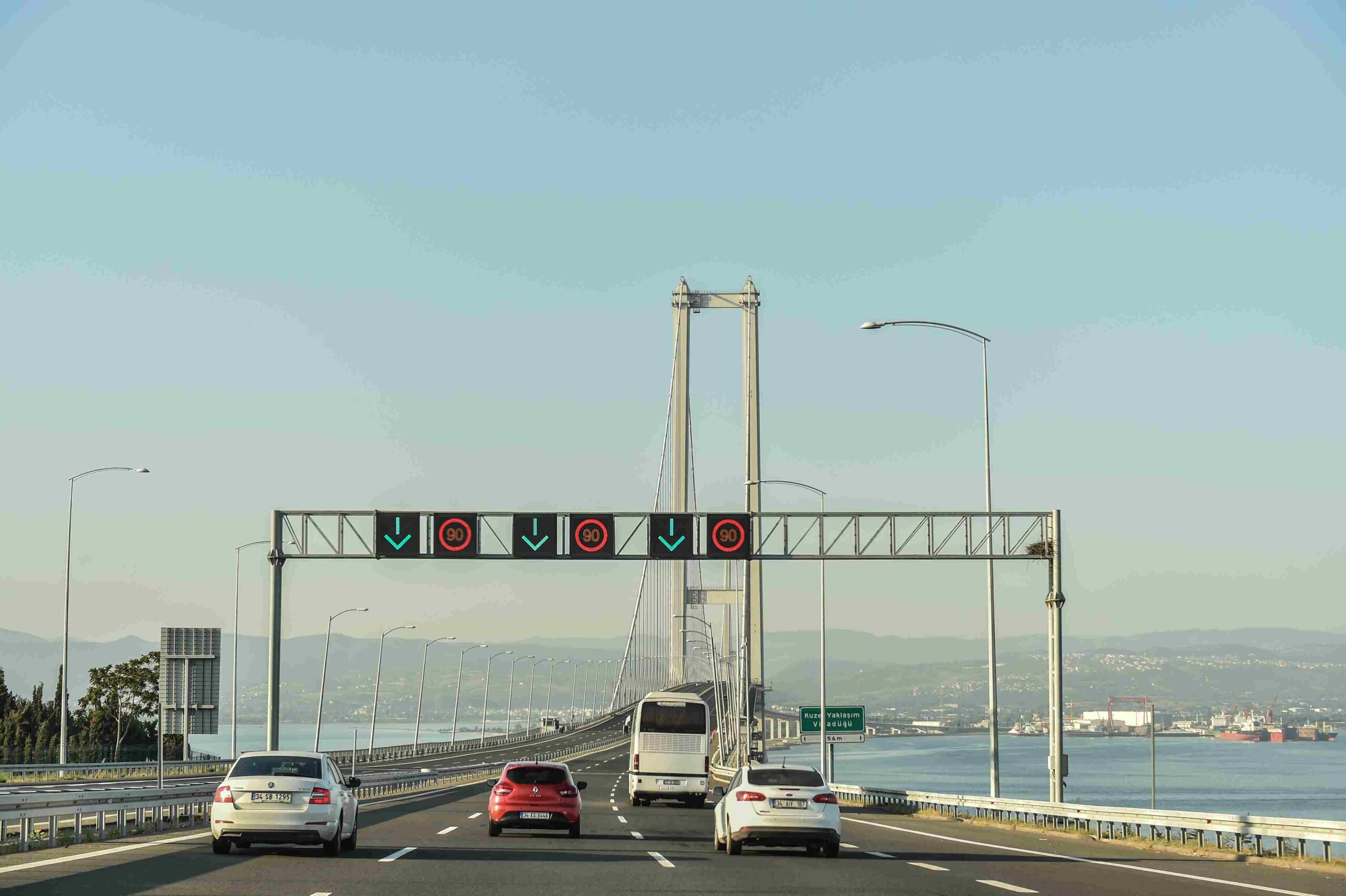
Pay Toll by HGS
On virtually all toll highways and toll bridges such as Istanbul's Bosphorus Bridge you cannot pay the toll in cash or by credit card. You are required to be enrolled in the HGS automatic toll system. This means the car you drive must be equipped with either an electronic-chip sticker or a toll transponder (small plastic device) mounted at the top-center of the windshield. These devices communicate with toll-tracking equipment mounted above the roadway, record your car's passage (via the license plate), and charge the toll to the car's account.
Your rental or hire car must be equipped—confirm that it is at time of the rental or hire! Note that a car rental company may charge a fee for use of this sticker or a toll transponder.
If your car is not equipped with such a device, traffic cameras will record your passage and a substantial fine will be levied against the car's owner, or the car hire company will pass the toll to your credit card.
Your Own Car
In theory, if you drive a car registered in another country into Turkey that has foreign license plates, you can stop at the first PTT branch you come to, give them a photocopy of your auto registration document and pay a nominal fee to be enrolled in the HGS system, and obtain an HGS registration sticker/label or an HGS registration card. Be sure to display these in your front windshield, as they identify you to the HGS system.
You must then pay a minimum credit to your HGS account to be used in payment of tolls. There are different rates depending on the vehicle class. For example, the minimum toll for a Class 1 vehicle such as a motorcycle, normal passenger vehicles, pickup truck or minivan measuring no more than 3.20 meters (10.5 feet) between the front and rear axles. The toll rates for larger vehicle classes are higher.
You may also be able to enroll in HGS at participating Shell fuel stations.
Note that you cannot pay your toll credit amount through any website. It must be paid at a PTT branch or Shell station. Websites claiming to credit your HGS account are fake and you will lose your money.
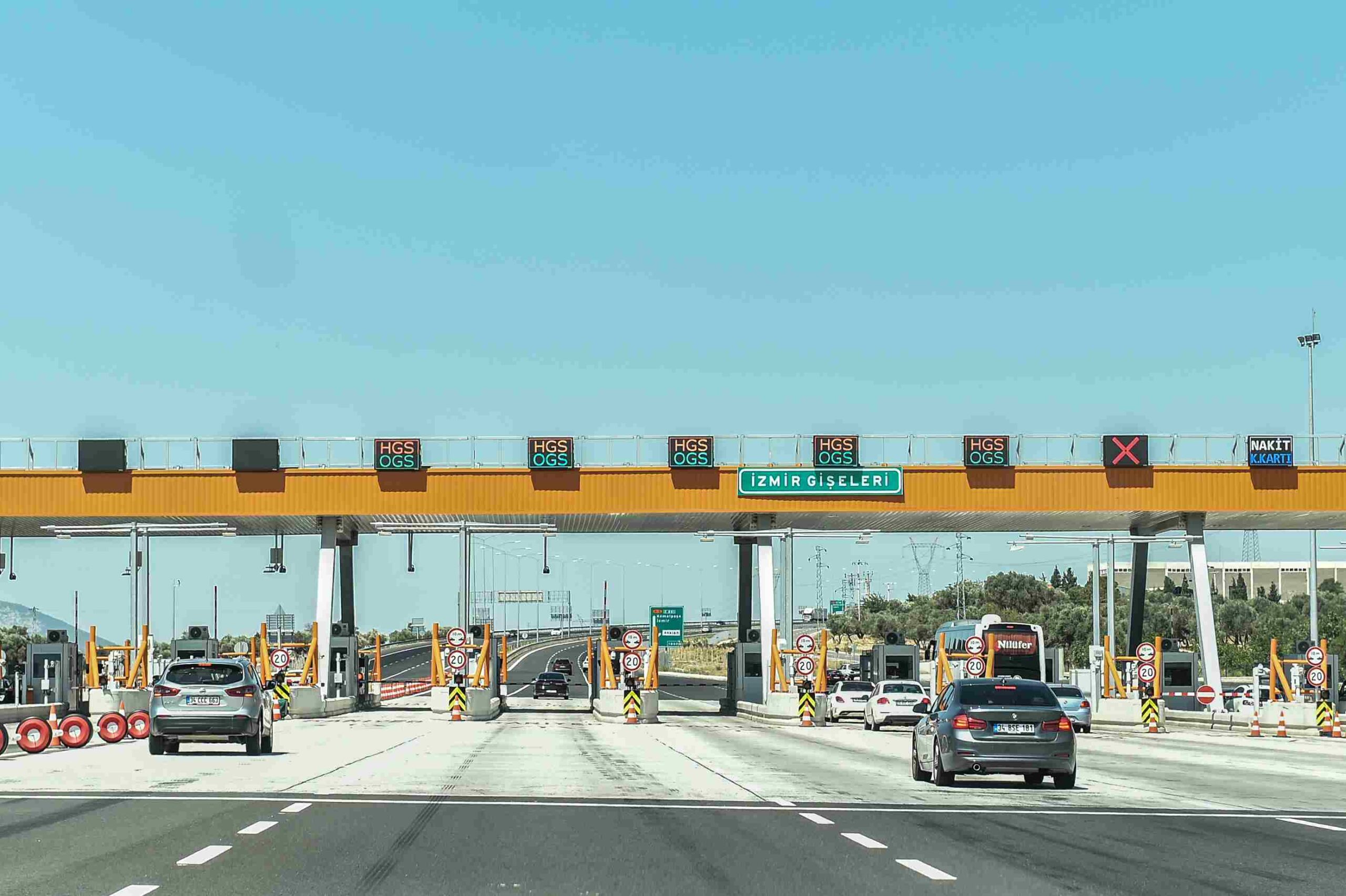
HGS vs OGS Turkey Toll Highway Systems
HGS = Hızlı Geçiş Sistemi, "High-Speed Passage System:" The high-speed system allows you to pass at highway speed through the toll road area. The toll is automatically deducted as you pass through the toll gates.
OGS = Otomatik Geçiş Sistemi, "Automatic Passage System:" the slow-speed automatic toll system where you drive more slowly through a toll gate and your transponder can pay tolls by entering the automatic toll gates.
When renting a car in Turkey, be sure to check which system the vehicle is equipped with. There may be a base rate per day for tolls or you may have to pay for each time you have used a toll road once you return the vehicle.
Otoyols (Expressways)
Turkey's modern otoyols (toll expressways) and bridges (köprü) are up to European standards and can increase safety and decrease your travel times, so you will probably want to use them during your driving trip to Turkey.
You'll see otoyols from Edirne on the Bulgarian-Greek border through Istanbul to Ankara, from İzmir west Çeşme, from İzmir south (for Ephesus) and east to Aydın, and in increasingly more locations around the country. If I can drive via otoyol, I usually do, though sometimes I prefer the slower traditional 2- and 4-lane highways which often parallel the otoyols.
The otoyols are smoother, faster, more comfortable and easier to drive. Tolls are not expensive.
Turkish Highway Map
Here is a Turkish highway map showing the Otoyols as well as traditional highways. Click a spot on the map to enlarge it.
Four-Lane Highways
Besides the toll otoyols, Turkey's non-toll highway system has been substantially upgraded in recent years, with safer, faster 4-lane dual-carriageway highways replacing 2- and 3-lane roads.
Many of these new 4-lane roads are not engineered to the standards of true otoyols (expressways) and are not limited access, however, meaning they are not as safe as otoyols, and thus speed limits are lower—but no tolls are charged.
—by Tom Brosnahan



